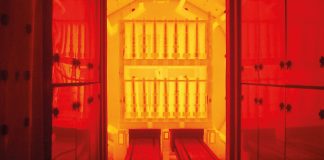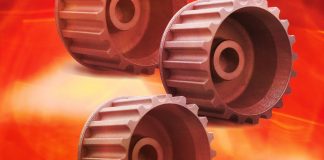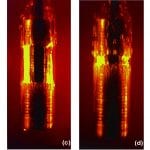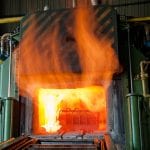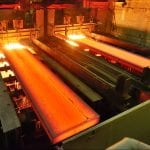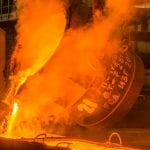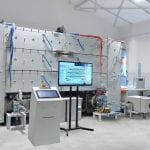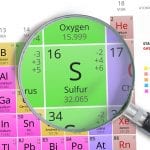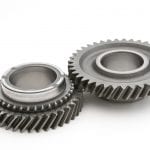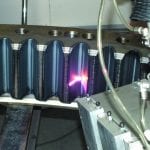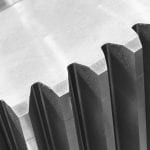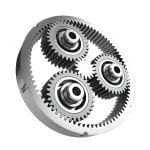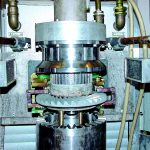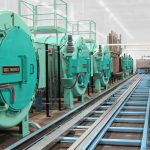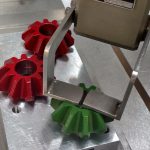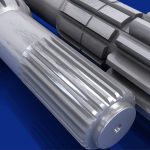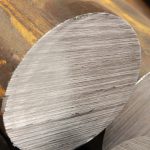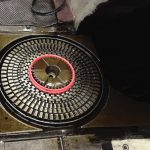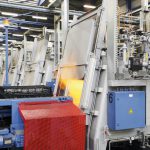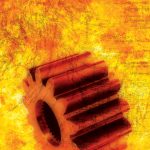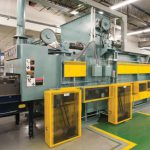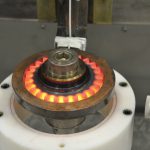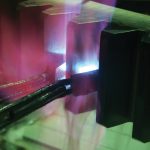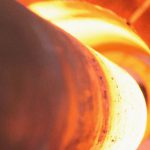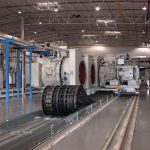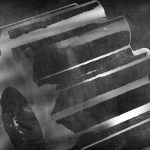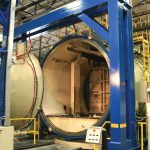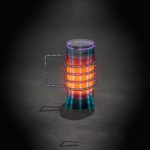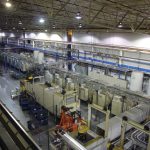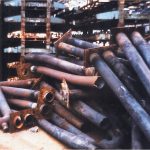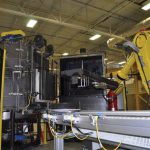Understanding the Cooling Curve Test
When a hot component comes in contact with the liquid quenchant, there are normally three stages of quenching. There are exceptions to this, which...
Buying a New Lab or Industrial Furnace
When the time comes to purchase a new lab or industrial furnace, there are several points that need to be considered before going out...
Heat Treating Education
In a recent paper by Janusz Kowalewski of Ipsen at the 3rd International Conference on Heat Treatment and Surface Engineering in Automotive Applications held...
Hybrid Forging: Advances in Open Die and Closed Die Forging
Today’s high-strength material users are increasingly obliged by everyday economic and competitive realities to seek alternatives to their current manufacturing processes. The reality that...
Single-Piece, High-Volume, and Low-Distortion Case Hardening of Gears
Global output of the automotive industry reached 86 million vehicles in 2014. Each vehicle is fitted with a transmission gearbox (see Figure 1). Ninety...
Detrimental Effects of Sulfur on Transverse Impact Properties in Steel Forgings
Anyone who has supplied or processed forgings for the power generation, oil and gas, or shipbuilding industries, among others, is familiar with Charpy impact...
Carburizing and Nitriding Treatment Modeling
(Photo courtesy of Advanced Heat Treat Corp.)
Carburizing and nitriding treatments have the same goal: increase hardness on the surface while keeping the core ductility....
Coupling CFD and Oil Quench Hardening Analysis of a Gear Component
Today, powertrain development is driven in the direction of weight reduction by replacing heavier components with low-cost or higher strength alloys for industries such...
Residual Stress Distribution in an Induction Hardened Gear
A vast majority of steel gears are heat treated in order to obtain the desirable properties of a final product such as a high...
Case Study: Laser Hardening
To increase the hardness of a steel material, there are basically three required steps in the hardening process. Step one is to heat the...
Improved Materials and Enhanced Fatigue Resistance for Gear Components
For decades, the gear industry has addressed the challenge to produce high-performance components in a cost-effective manner. To meet design intent, vehicle transmission components...
Analysis of Heat Treat Growth on Carburized Ring Gear and Multivariate Regression Model Development
In gear manufacturing and machine assembly, dimensional stability of each component and conformance to print requirements are of critical importance. During processing, dimensional changes...
Inductive Fixture Hardening and Tempering Process for Dimensionally Accurate Parts
Automobile manufacturers increasingly require components with greater accuracy for use in sophisticated applications. To meet these increased requirements, press hardening was developed, and there...
Nitrocarburizing Gears Using the ZeroFlow Method in Large-Volume Production
Retort-based nitriding and ferritic nitrocarburizing have been around a long time. Modern day challenges include providing known, repeatable hardness and surface case structures with...
Ion Nitriding of Ferrous and Titanium Alloys for Gear Applications
Thermochemical surface engineering is effective in improving the performance of various gears made of ferrous alloys . The cost of machining typical gears during...
Advanced Robotics Combined with Eddy Current Testing Offers Verification Methods for Heat-Treated Gears
Eddy current is a nondestructive testing technique proven for use in heat treatment and material structure verification. Modern multifrequency eddy current instruments can test...
Optimizing Case-Depth Uniformity in the Vacuum Carburizing Process
Over the past few decades, the vacuum carburizing process has been proven to produce superior part quality. In addition, the use of vacuum technology...
A Time-Compressed Numerical Approach for Thermal Analysis of Preheating Process in Powder Metallurgy
Introduction
Recent developments have been made in the field of powder metallurgy of materials to obtain advanced properties as compared to conventional manufacturing of materials...
Stress Generation in an Axle Shaft during Induction Hardening
Introduction
Induction hardening of steel components offers a fast heating rate, high efficiency, and the ability to heat locally. Induction hardening is a highly nonlinear...
Enhanced Properties of 17-7 PH Stainless Steel
Background
Precipitation-hardening (PH) stainless steel grade 17-7 PH is classified as a semiaustenitic stainless steel used extensively in aerospace and finding new applications in the...
Controlling Distortion in Heat Treatment Through Press Quenching
Introduction
Press quenching is a specialized quenching technique that may be utilized to minimize the distortion of complex geometrical components during heat treatment1. Distortion is...
Producing Quality Parts in an Atmosphere Furnace: How to Optimize Your Quenching and...
Throughout the manufacturing process, heat treatment is consistently viewed as a critical step for adding value to the parts produced. A part expensively manufactured...
Reducing Gear Size for Compact Transmission Design by Selecting Steel Grade and Heat Treatment...
Gears are the most important components for transmissions. In many situations, the size of a transmission design needs to be reduced without decreasing power...
Mathematical Modelling of the Vacuum Carburizing Process
CAs expectations regarding the quality and precision of products continue to grow, further advances in materials engineering are strictly associated with the use of...
Case Study: SECO/Warwick and ABB Instrument Transformers
Instrument transformers are a precision device designed to accurately meter either current or voltage on an electrical circuit. They also provide a means to...
Some Basic Mathematical Elements On Steel Heat Treating: Modeling, Freeware Packages And Numerical Simulation
Every year since 2007, in June, a Modeling Week is held within the master program of the faculty of Mathematics of Universidad Complutense of...
Case Study: Phoenix Contact and Ipsen
Ipsen supports its equipment across the globe using the mGuard VPN router from Phoenix Contact, which allows secure remote access via the Internet.
Ipsen designs...
Investigations on Tooth Root Bending Strength of Case Hardened Gears in the Range of...
Gears are one of the critical components that determine the capability and reliability of drive systems. Thus the tooth root load-carrying capacity is one...
Flame Hardening Gears
Long gone are the days when a machine operator sat in a dark corner of the shop staring at the cherry red glow of...
Heat Treatment of Large Components
Large gear components can be offered in many applications such as marine, wind power, steel rolling mills, power plants, transportation, railroad, aircraft, cement crushers,...
Advantages of Induction Hardening with No Soft Zone on Large Bearings
Large bearings are required to carry large axial and radial forces and their resulting torques. Typical applications include general machinery and construction equipment, as...
Increased Productivity Combining C/C Fixturing and LPC
Carbon/carbon and graphite materials are used in a variety of applications throughout the high temperature furnace industry. Entire vacuum hot zones are manufactured from...
Heat Treat 101: A Primer
Gears play an essential role in the performance of many products that we rely on in our everyday lives. When we think about gears,...
Vacuum Carburizing Large Gears
Throughout the machining process, great care is taken to achieve and maintain critical dimensions. The gears are then handed over for heat treatment. Exposing...
Tooth-by-Tooth Induction Hardening of Gears (and How To Avoid Some Common Problems)
Tooth-by-tooth induction hardening of gears is a complex process. Variations of any of kind may be sufficient to cause the process to run out...
Inductive Spin Hardening of Gears: A Survey of Key Features and Benefits
A large part of the misunderstanding of induction hardening seems to stem from an incomplete grasp of the basic induction heating process. This is...
Properties of Cases Treated with High-Temperature Vacuum Carburization
Carburizing continues to be one of the basic thermochemical treatments used for industrial steel. With the development of the industry, carburizing has evolved from...
CASE STUDY: Company: Praxair Distribution, Inc. Customer: ALD Thermal Treatment, Inc.
In the past several years, heat treating companies have experienced a significant supply disruption in generated acetylene. Additionally, generated acetylene may not offer the...
Cures for Heat Treaters Headaches
Heat treaters all over the world encounter similar problems with atmosphere furnaces. These problems not only cause operational headaches in the daily lives of...
Improving Production Safely with Integrated Heat Treat and Quenching Cell
These aspects are not just requested, but increasingly required by industrial clients looking to install new thermal systems or expand or enhance existing processes...












